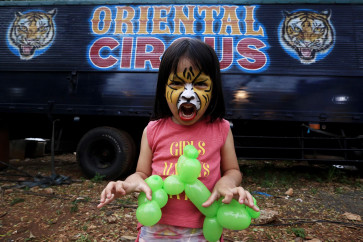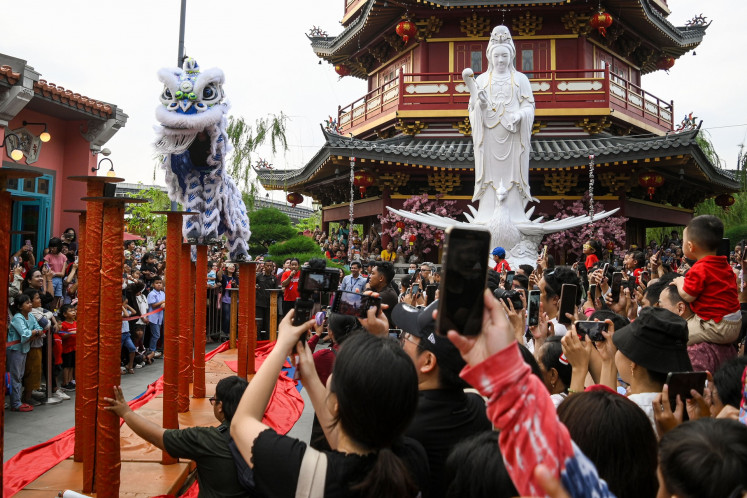Sangeh, Bali's popular monkey forest
The keepers of the forest have their hands full, feeding and caring for roughly 600 macaques who make their home in Sangeh monkey forest, located about 20 kilometers north of Denpasar, Bali's capital
Change text size
Gift Premium Articles
to Anyone

The keepers of the forest have their hands full, feeding and caring for roughly 600 macaques who make their home in Sangeh monkey forest, located about 20 kilometers north of Denpasar, Bali's capital.
Tourist arrivals coincide with feeding time, which is around noon or early evening and has become a major attraction for visitors from home and abroad.
Close contact with these human-friendly animals is an experience to be cherished while staying in Bali. The macaques, in turn, have become accustomed to these visits and do not hesitate to sit on tourists' shoulders, munching peanuts, a banana or whatever else is given to them.
Accompanied by guides, visitors enjoy walking in the 10 hectares of monkey forest, canopied by a thick foliage of pule trees (Diterocorpus sinervis).
The trip offers an opportunity to see how the macaque colony has enjoyed an undisturbed life in their natural habitat since the 17th century.
While in other areas this species has been hunted and harassed to near extinction, it's quite comforting to know that at Sangeh they are at ease in their own environment.
These monkeys can be seen gathering in groups while they groom each other. Some female monkeys are breast-feeding their babies under the shade of the pule. And it's heartening to see a family of monkeys gather in a leisurely atmosphere and allow visitors to approach them.
Despite having inhabited the area for centuries, guides said they have never found a corpse of a dead monkey. It's a puzzle even the guides cannot explain.
"But a sick monkey will indicate so by quietly sitting on the pathway, waiting to be picked up and taken to the vet," said one guide.
With this health service, it's little wonder that their population has grown into the hundreds.
The monkey forest, managed by the local government of Badung regency, has been upgraded for the convenience of the tourists.
The entrance gate has been relocated for better access to a wide parking area for buses, allowing visitors to proceed straight into the monkey sanctuary.
The colony of macaques has become familiar with the guards and humans. As if understanding what is expected of them, they patiently wait for their guests near the forest's entrance gate instead of venturing into the parking area or front office.
The colony is divided into three large groups, one each inhabiting the eastern, western and central parts of the forest. It is common among these groups to each have a leader, whose strength and authority has been tested.
Legend has it that the Sangeh monkeys were once guardians of a princess. Their legendary status is still upheld by the residents, allowing the macaques to live an undisturbed life in their protected natural habitat. The forest is also home to several temples, the oldest one being Pura Bukit Sari, dating back to the 17th century.
An impressive statue of Kumbakarna at the entrance gate reminds visitors of the role monkeys play in the Ramayana Hindu epic.









